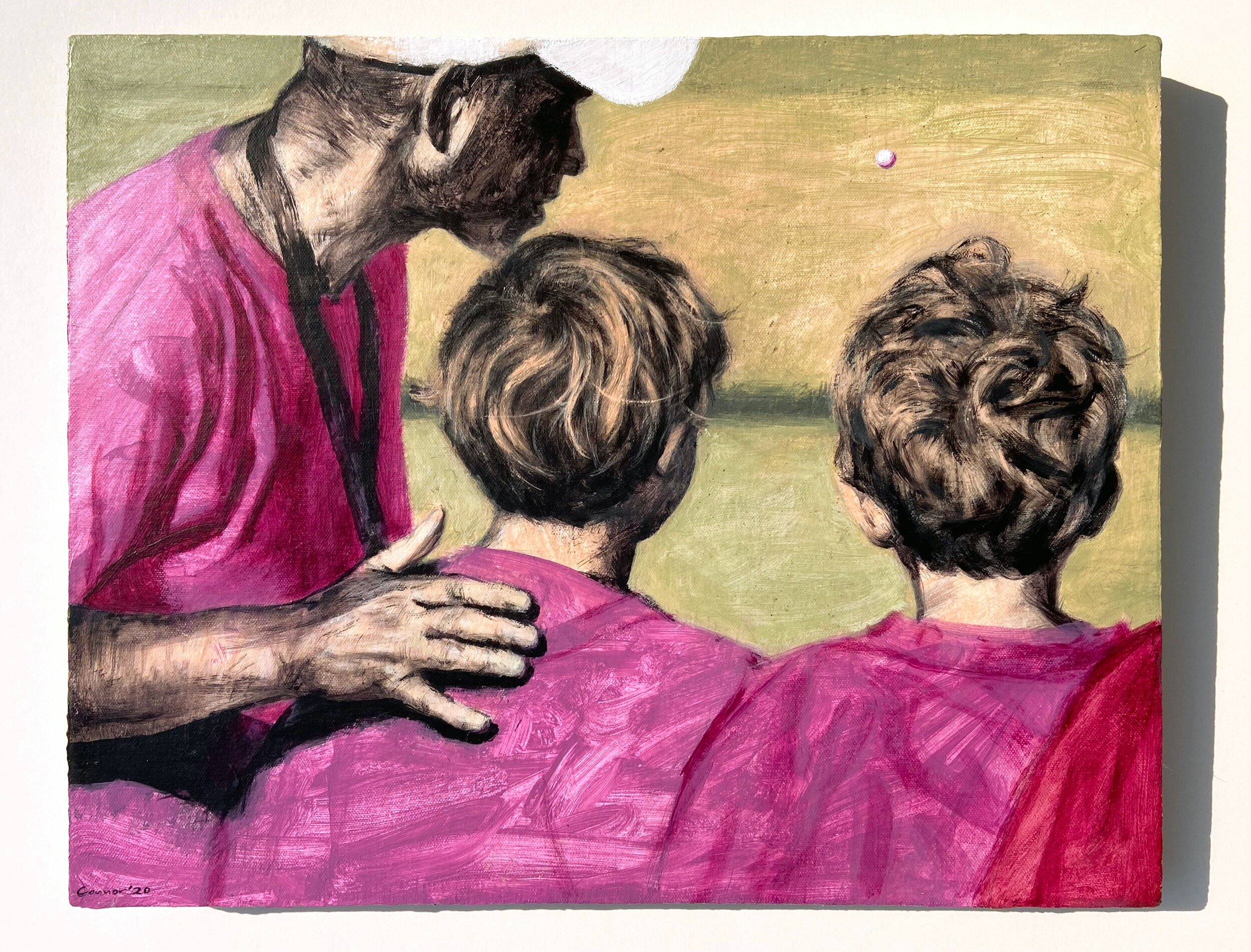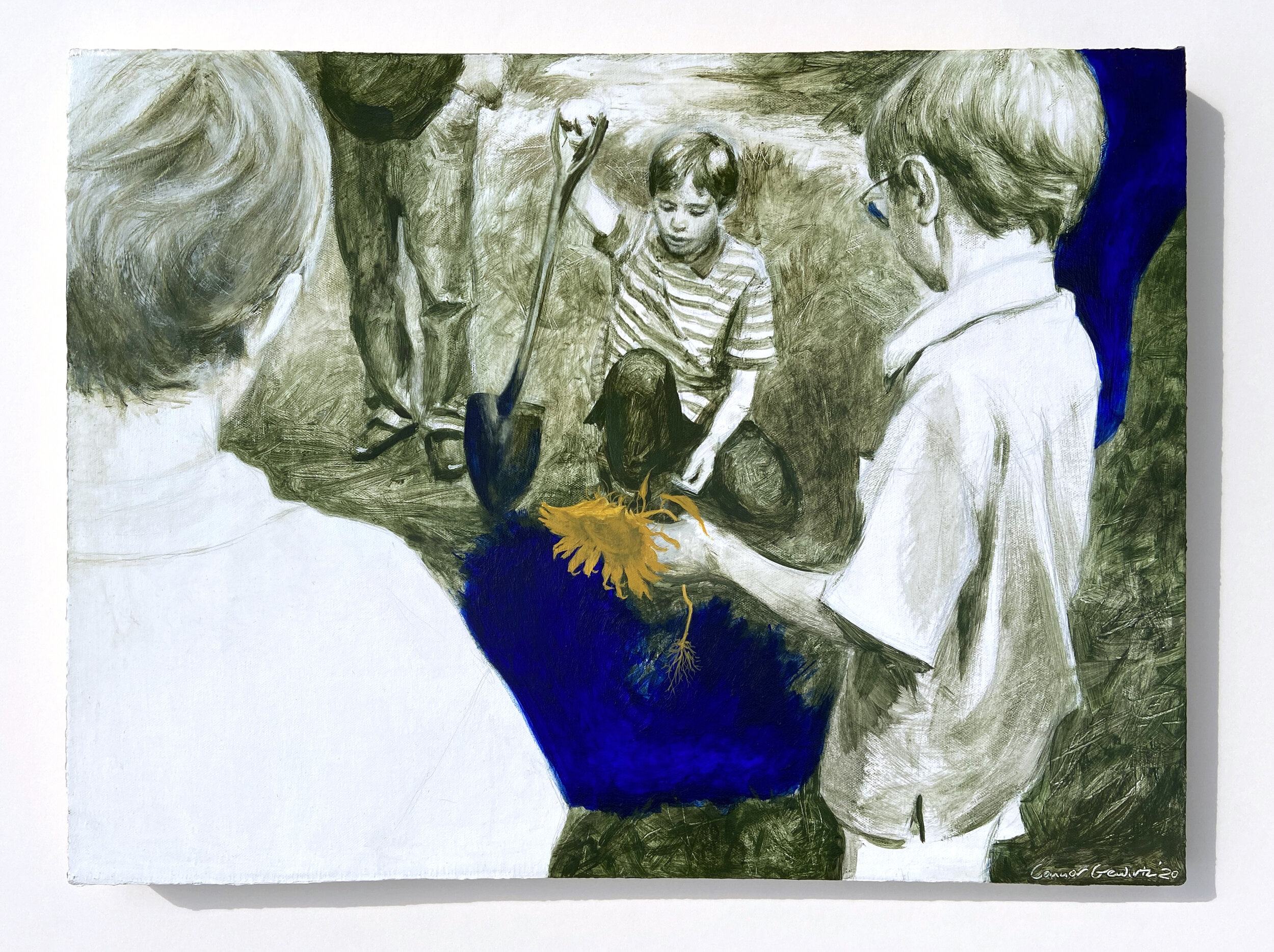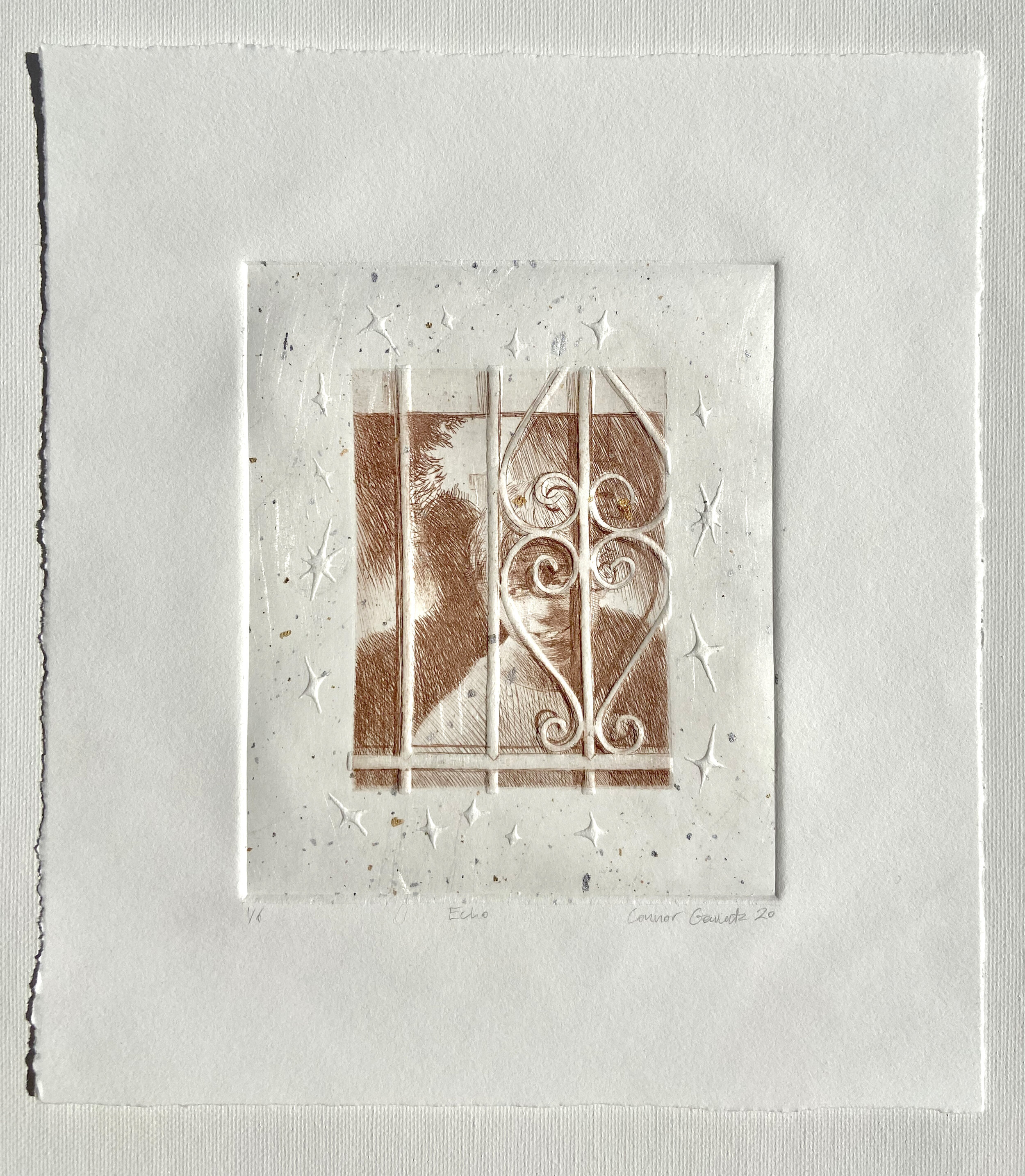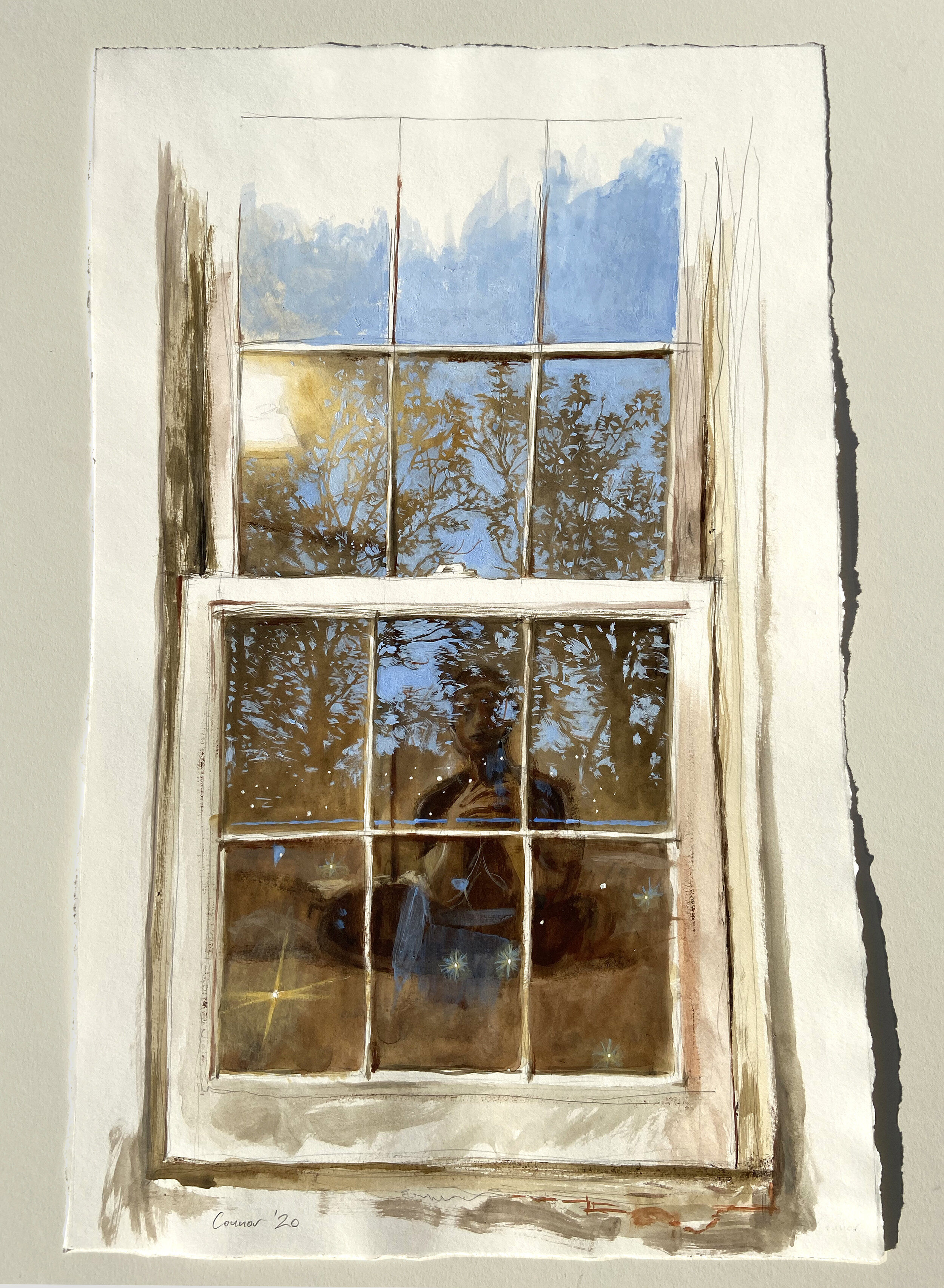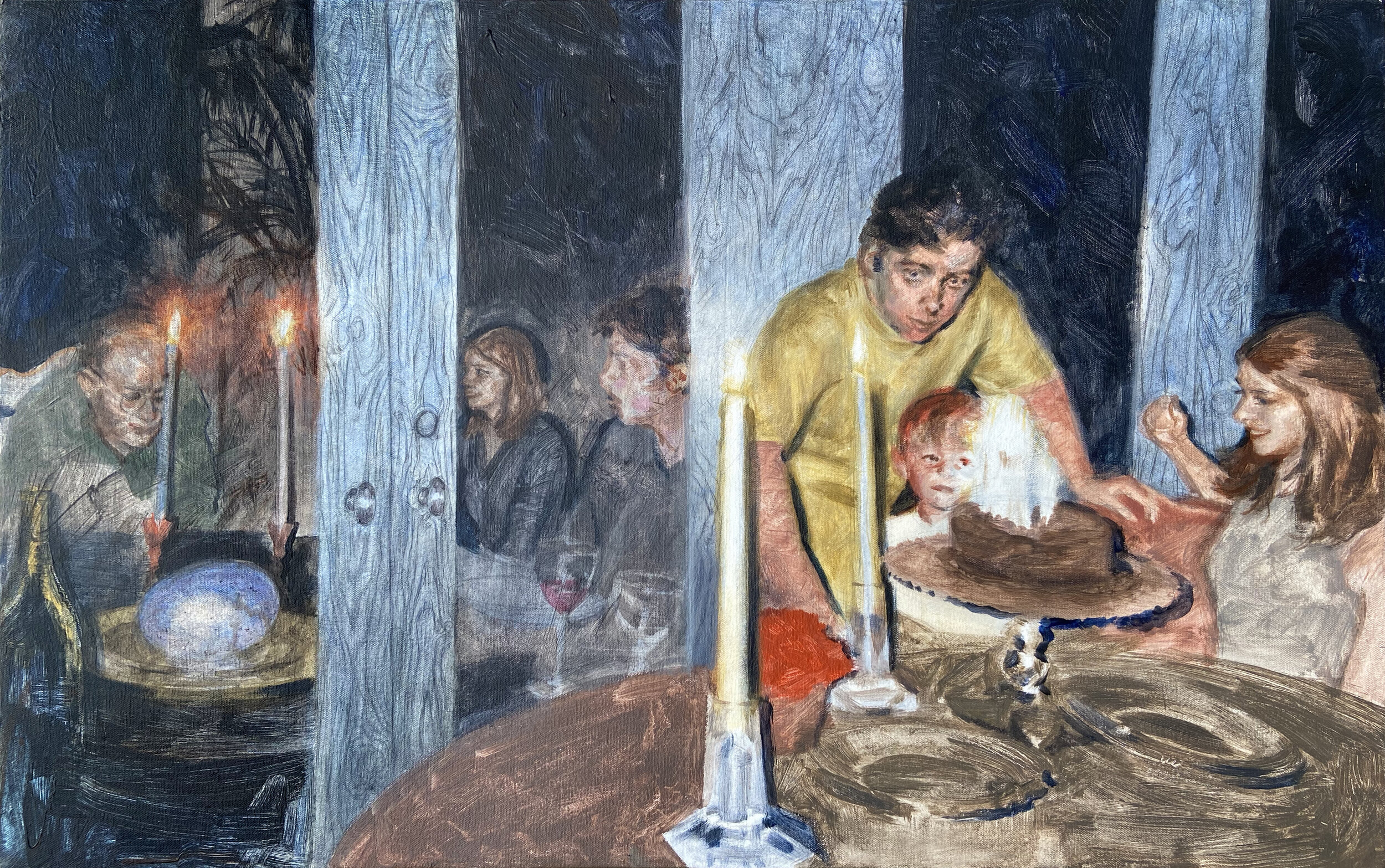Connor Gewirtz is a talented painter and printmaker who is about to finish out his senior year as a student in the Illustration Department at the prestigious Rhode Island School of Design. Connor was featured in the 2019 College Exhibition at the Providence Art Club, which I juried. At the end of that show, we selected Connor as the recipient of a special Best in Show Award that came with a solo exhibition at the Club. On view in the Art Club’s Mary Castelnovo Gallery through Friday, May 28, 2021, Connor’s exhibition Changeling shows off both his technical acumen and his unique knack for storytelling. I am thrilled to have had the chance to work with this rising talent and look forward to following his career. I am also pleased that Connor was willing to take part in my Ten Questions Interview Series to complement his show. I hope you’ll read the interview below, then join us for a special virtual Artist’s Talk on May 26, or visit the show before it closes on May 28.
-Michael
Michael: As a senior at the Rhode Island School of Design, what advice would you give to students considering an "art school" education. What are your key takeaways from your time at RISD?
Connor: Art school can provide a solid critique environment, but one thing that’s nearly impossible to teach is how to be your own artist. I came in with the expectation that I would be handed the key to making successful work but felt a bit lost when I realized this wasn’t going to happen. If I could give advice to somebody beginning at art school, I’d recommend nurturing the ideas you love within your own work rather than trying to make work for your instructors.
Michael: Your solo exhibition Changeling at the Providence Art Club contains images that touch on deeply personal themes. Can you talk about making and sharing work that reveals private stories?
Connor: I think the title of the exhibition gives a direct allusion to many of the themes within the work. I started the series by making narratively abstract works, but as I learned more about my family tree, they began to steer more into a mishmash of personal history. Much of the work is a reflection on this family tree and rethinking the traditional definition of family.
Michael: Can you talk about your process in beginning a painting? Do you start with a drawing? Your images are intricately layered - how do they come together?
Connor: Drawing is such a vital part of the painting process. I often start by making collages and sketches and then I create a final drawing on canvas based on the best ideas. I spend the most time on the drawing stage because any mistakes in the drawing tend to haunt me when I’m building up the painting.
Michael: The palette of your recent paintings is a key element of your storytelling. Can you speak to how you use color to delineate space and time in your work?
Connor: I try to use color in a deliberate way. Like you mentioned, I often use my palette to convey a separation between different spaces. As I’m colorblind, it can be very difficult to differentiate subtle differences in hue, so I try to have my symbolic colors contrast from the background.
Michael: Do photographs and family archives play a significant role in your work? If so, how do you utilize them?
Connor: Yes! As I mentioned, collage features heavily in my imagery. I often start working backwards from a particularly important photo by trying to find other related images that fit the idea. This process is vital to the current work as a means of tracing my own memories back to their source along with trying to demystify my own nostalgia for my past.
Michael: You have a number of prints in your show. Can you talk about your printmaking and how it and your painting interact with one another?
Connor: I’m so thankful for getting the chance to learn printmaking. I started learning about a year and a half ago through a couple of classes across RISD. Printmaking is a big extension of my drawing process. Where painting can be time consuming for one original work, printmaking allows me to share my drawings with far more people by creating multiples. One of the big constraints I’ve put on my intaglio is keeping it monochromatic. Where nearly all of my paintings use palettes of 5+ colors, by keeping the prints monochromatic I can focus more on linework and tonal images.
Michael: You have been preparing for your exhibition for some time. Can you talk about your process in creating, selecting, and editing the body of work you chose to share?
Connor: It was a total surprise to get the opportunity to do the show, so I started totally unprepared. Over the course of the year I went through at least five different series. The final presentation is only about a half of the number of pieces that could have fit thematically, but given the space I had to make some serious cuts.
Michael: You also installed your own exhibition at the Art Club. I think many artists find installing shows to be a difficult task. Can you speak to your vision for the show and how you decided to hang your work?
Connor: I invested so much time in making and preparing the work that I wanted to have a hand in its presentation. In the past I’ve helped other artists curate their shows, so it felt right to finally do it myself. The work is hung in groupings that connect thematically with each other.
Michael: Although a young artist, you have already developed a great resume of exhibitions, awards, and residencies. What advice do you have for emerging artists on finding opportunities and sharing their work?
Connor: Hahah well I guess that’s true, but it still feels like I’ve barely scratched the surface. The only advice I can give for exhibiting is to keep working until you have a solid handful of connected pieces that resonate with you.
Michael: As you finish up school and consider your future plans, what's next for you? Where do you see yourself going both creatively and professionally
Connor: I’m going out on a limb and moving to NYC with the hope of being able to continue making and showing my artwork. Wish me luck!
Connor’s solo exhibition Changeling is on view in the Mary Castelnovo Gallery at the historic Providence Art Club through May 28, 2021. Gallery hours are Sundays - Fridays, 12-4pm each day. Connor will also be participating in a free Artist’s Talk on Wednesday, May 26 at 6pm Eastern Time. Register for Connor’s talk on Eventbrite. To inquire about Connor’s exhibition, email michael@providenceartclub.org.
You can also learn more about Connor at his website connor.art and you can follow him on Instagram at @connorgewirtz.
